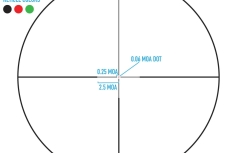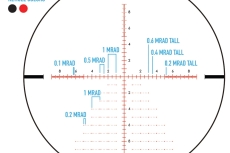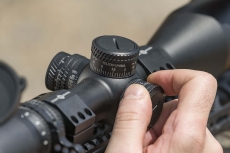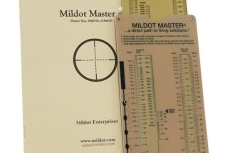Are MOA more accurate than MIL?
Gun Pills / One of the recurring objections to the use of MILs in rifle optics is that MOAs are “more accurate”, and the math apparently backs this up. Let's take a look at the data and these practical implications of the two units of measurement.
MOA and MIL are both units of angle measurement, used in rifle optics to measure corrections set via turrets to compensate for ballistic drop, wind, target drift and more but, according to many shooters (especially long range shooters) MOAs allow for more precise adjustments than MILs. Let's take a look at the numbers.
MILs are convenient to use, as 1 MIL is exactly equivalent to 1 m at 1000 m, or 10 cm at 100 m. This makes it easy to set corrections and calculate distances based on objects of known size. Most scopes have subdivisions equal to 1 click = 1/10 MIL = 1cm at 100 m.
On the other hand, 1 MOA is approximately 1” at 100 yards, or approximately 30 mm at 100 m. While this approximation exists, MOA advocates believe it can be neglected for most practical uses, and they are right. Most scopes have subdivisions of 1 click = 1/4 MOA or 7.5 mm at 100 m.
Competition scopes for long distance shooting may instead have 1/8 MOA subdivisions, i.e. 1 click = 1/8 MOA or 3.75 mm at 100 m.

MIL riflescopes are increasingly used in every field, as on this Sabatti Rover Shooter rifle, suitable for shooting and hunting

If you use a spotter scope with reticle, it is best that this is in the same unit of measurement used by the scope mounted on the rifle
In the photo: Sightmark Latitude 15-45 x 60 Tactical Spotter, with MIL reticle
As can be seen, MOAs are actually about 3 times "finer" than MILs, therefore the objection of precision shooters regarding the use of MILs is justified at least following the theory. In practice things are a little bit different.
Because indeed, 1 cm at 100 m is coarser than 3.75 mm at 100 m, but in practice, who can make "real use" of this difference in precision shooting?
There are very, very few people who can repeatedly place their shots into 1cm diameter at 100m, even fewer who can hold 6cm at 600m, and any shooter at this level would have no problem moving the your aiming point just enough to compensate for the fineness of adjustment.
Therefore, for all practical purposes, the theoretical "superior precision" of MOA adjustment of an optic is irrelevant, and discussing whether a 3.75 mm or 1 cm click is better is a just a moot point.
The ease with which a MIL reticle allows the shooter to quickly determine corrections and distances for objects of known dimensions, however, is so significant that there is no reason to even weigh whether it is worth choosing MIL or MOA. This is why most tactical, hunting and target rifle scopes are increasingly MIL, with a few exceptions catering to a shrinking market of traditionalist precision shooters.
Whatever the choice, however, there is one thing you really should never do: mix a MIL reticle with MOA turrets. The necessary conversions, to be calculated on the fly, are simply too inconvenient, to the point that, when all optics still had corrections in MOA, and the Mil Dot reticle became widespread among military snipers, they were supplied with a slide rule to convert what the reticle said into clicks on the turrets.










